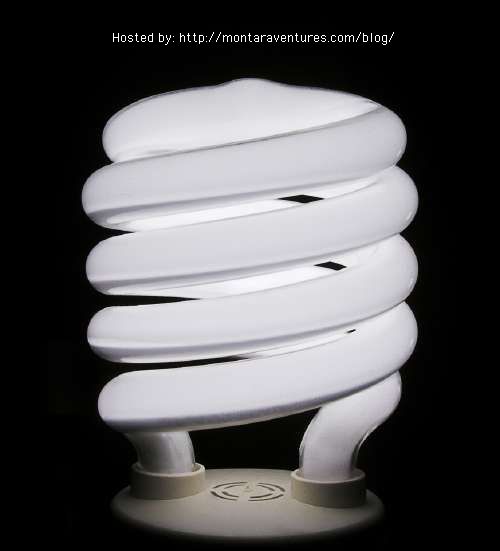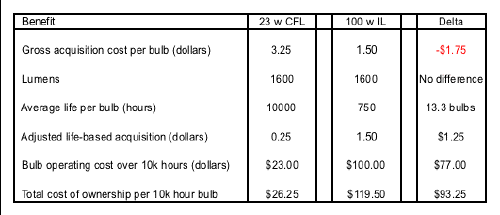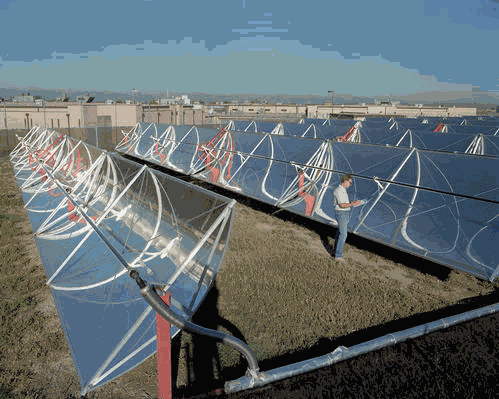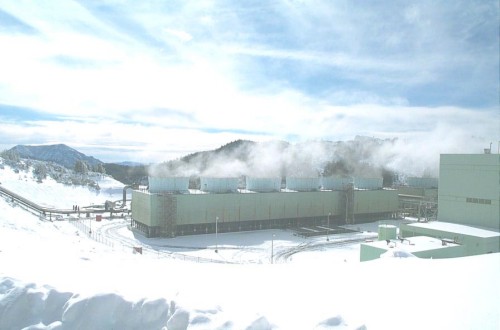Archive for April, 2007
Raft River closer to Reality
.jpg)
Condenser unit being transported to the site
U.S. Geothermal has entered the press release business too. But, they actually had some interesting things to share today about their Raft River project in Idaho:
* Power plant equipment and cooling tower foundations are complete
* The generator, main transformer, air compressors and pentane storage
tanks have been delivered to the site
* The cooling tower is under construction
* Industrial Builders of Ontario, Oregon was awarded the mechanical
construction contract by Ormat and began fabrication work in February
* The award of the electrical construction contract is anticipated in April
* The Ormat turbines, and Level One heat exchangers have been shipped
from the Ormat factory in Israel and are in transit
* Fabrication of the power plant condenser and demister is completeNew photos of the construction site and equipment are posted in the Gallery section on our website at www.usgeothermal.com.
In addition, Raft River Rural Electric Cooperative has finished construction of the 3.2-mile power transmission line that connects the power plant to the Bonneville Power Administration substation at Bridge, Idaho. Equipment upgrades to the substation including a breaker, relays, and communications systems are underway.
This constitutes real progress for the company and shows that a new geothermal production area will be online shortly.
Comments are off for this post
Leading with the lightbulb

Little things can add up, and add up quickly. Target stores recently ran a television advertisement that was instructive: If each one of their customers replaced one incandescent lightbulb with a compact fluorescent bulb, it would have the same impact as removing 1,000,000 cars from the road.
As I write this, I’m looking at a package of four Philips Marathon 100 compact fluorescent lightbulbs acquired from Costco for $10 (there was a special program from PG&E that gave an instant rebate to get that price – what a great program.)
Why should you invest in making the change to compact fluorescent? Here is some data to show the benefit of a 23 watt compact fluorescent vs. a standard 100 watt incandescent bulb over the life time of the product.

Reason #1, for each bulb you replace, you’re going to get a $93.25 benefit over the lifetime of the bulb. That’s real, tangible money in your pocket.
Reason #2, for each bulb you replace, you’ll reduce your energy demand by 770 kilowatt hours. Assuming that 50% of that electricity is provided by coal fired plants (as is the case in the US on average,) that will displace 350kg of carbon dioxide emission and 5.8 kg of (SO2 and NOX) per bulb.
Now, walk around your home and count the number of incandescent light bulbs…As a test I counted for one floor of my house, 33 bulbs. The cold hard math on this is that by replacing the 33 incandescent bulbs with compact fluorescent bulbs it puts $3,077.25 in my pocket, displaces 10,725 kg of carbon dioxide, and displaces 191 kg of SO2 and NOX. Here’s the question, can you afford not to make the change?
Concentrated Solar Power: The pragmatic way to harvest the Sun?

With the impending arrival of Nevada’s Solar One project, a 64MW CSP array, it’s time to ask ourselves if this is the most pragmatic way to scale solar in a cost effective manner at utility scale? One item is mentioned with respect to this project: using salt as a means to store heat to boost the production from a peaking capability at daylight toward a baseload characteristics exhibited by hydro, geothermal, and fossil plants.
Raser acquires yet another lease
Raser Technologies has been in the news alot lately. Today they’ve announced another 4,000+ acres of leased land in central Utah. One has to wonder if the press release strategy will cause a backlash as the timeline and costs for development become clear to investors.
Comments are off for this post
While waiting for Calpine’s announcement

You might want to take the time to review their recently filed annual report. There is a treasure trove of information disclosed in this document about Calpine and its 273 subsidiary companies. It’s clear that Calpine is endeavoring to position itself as a “clean energy provider” and the crown jewel of that effort is the Geysers geothermal plant portfolio.
The Geysers has been under development since the early 1960s, it’s an active seismic area about 75 miles north-northeast of San Francisco that produces hot, dry steam, a reasonably rare geothermal resource (there are 5 such fields in production globally.) The 1980’s saw massive expansion in the area and production peaked at around 2250MW in 1989, but there was a problem. Steam pressure was dropping quickly and no one seemed to know what to do about it.
The basic problem was over production coupled with exhausting the geothermal resource into the atmosphere. The Geysers plants in general, have production wells that route the steam to turbines attached to generators. After the steam is “used”, it is routed to a condenser and then to a cooling tower where 70% of the mass is emitted into the atmosphere and about 30% returns to liquid state. Along the way, non-condensable gases are removed (like Sulphur, Mercury, and Vanandium) to eliminate atmospheric pollution.
Since the 1990’s, the 30% condensed liquid has been injected back into the reservoir which helped slow the decline in steam pressure. In the late-1990’s, two pipelines were constructed from Clearlake and Santa Rosa pump around 19 million gallons per day of treated wastewater (grey water – aptly named “flush to flash”) to the field for injection into the reservoir. This has served to stabilize the reservoir at around 900MW gross output, with slight declines still seen year over year.
Calpine acquired 20 of the 22 operating plants from PG&E in 1999 for a reported bargain price of $155M. As of the information in the most recent report, the 19 operating plants (1 remains offline) produced 6.6 million megawatt hours in 2006, at market prices of $70 per megawatt hour, around $462 million dollars worth of power from a reported 725MW portfolio. The numbers don’t quite add up as that would put the the capacity factor of the 725MW at 105% vs. the 90-95% that is common for geothermal operators. (Note: The other two plants at the Geysers are owned and operated by the Northern California Power Association currently producing some 132MW gross, 120MW net. And it’s interesting to note that US Renewables is reviving the Bottlerock plant and Western GeoPower is riviving PG&E’s old Unit 15 plant.)
While the geothermal portion of the Calpine portfolio performed well, it’s clear that the natural gas segment is sagging. Between interest charges and fuel expense, it’s a money losing operation. Fuel costs increased to 48.3% of revenue in 2006 from 45.7% in 2005 (it is true that absolute fuel cost decreased to $3.2B in 2006 vs $4.6B in the same period, divestiture of non-performing plants has helped.) Interest expense increased to 18.8% of revenue from 13.8% the prior year (absolute value again decreased to $1.2B from $1.4B.)
As Calpine is snagged up, I have to wonder what the purchaser will do with the Geysers asset. It’s clear that the unit would be profitable on its own. Perhaps a spin out?








